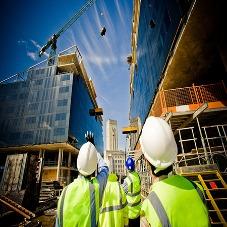Energy saving lighting has been a hot topic for a while now, we have been told to make the change to LED at home but how many large construction projects are doing the same?
We have taken data provided by Barbour ABI to look at planning applications submitted in the UK in 2016 and 2017 that contain the requirement for LED lighting. This data has been broken down by region and sector.

Figure 1.1
According to recent data published by Barbour ABI the Education sector was at the forefront of LED lighting installation in 2016. Closely followed by the Commercial sector and then Hotel & Catering. 17% of applications sourced by Barbour ABI in 2016/17 with an LED Lighting requirement, were for the Education sector; 149 applications were submitted in total. Commercial came in at 16% with 144 applications and the Hotel sector at 14% with 129.
Why is this the case? It is important to take cost in to consideration, are these sectors more likely to want to cut corners in terms of energy bills? This could certainly be the case where schools are concerned. Discussions about funding for schools is always a prominent issue in the media and in politics. As such schools and education facilities could be installing more LED lighting to cut future energy bills and minimise the life cycle costs of their buildings.
This could also be the case for the Commercial and Hotel sectors. Oftentimes retail outlet will keep security lighting on throughout the day and night meaning that any savings to energy costs would make a big difference to a store’s running costs; similarly in hotels lights are always in use in the lobbies and communal areas. Hotel owners cannot always control their lighting usage, guests having access to lighting and power outlets throughout their stay, as such installing LED lighting could reduce the risk of hefty energy bills.
Studies have also shown that LED lighting can present a number of health benefits, including increased motivation, concentration and energy. LED lighting, unlike more traditional lighting, gives off light that is similar to daylight, leading to an increase in moral and work ethic. Could this be a contributing factor to the high number of LED installations in the Education sector? Looking at the data from Barbour ABI, the 132 planning applications that included LED lighting for the Industrial sector could also suggest the same.
However, this does not account for the mere 18 planning applications reported by Barbour ABI that were submitted with LED lighting for the Medical and Healthcare sector, despite most online sources claiming the health benefits of LED lighting in hospitals and medical facilities. There could be any number of reasons for this, the main reasons being cost and convenience. Due to the busy nature of hospitals, perhaps huge refurbishment or new build projects are not undertaken as regularly as the can be in schools? Hospitals could be replacing their lighting installations as and when due to the heavy footfall of patients throughout the year.

Figure 1.2
From the ABI data we notice that LED lighting was a more prominent requirement in planning applications in London and the South East. This could simply be in correlation with the rate of population and development growth in and around London. It could also be related to increase funding in some of the UKs more affluent areas.
The number of applications submitted for LED lighting appears to decrease the further North we go, seeing a significant decrease in applications for the North East, Scotland and Wales. This is most likely due to a dispersed population in those areas as well as a potential decrease in funding compared to more urban areas. Applications for the North West are slightly higher, perhaps to do with urban epicentres such as Liverpool, Manchester and Preston.
Current projects with LED lighting installations:
Project: Swansea Central
Architects: ACME
Sector: Mixed use Commercial, residential, leisure
Value: £203M
A new build mixed use development that will provide retail, commercial, offices, housing, an arena, hotel, bars, restaurants, a library and a church. LED lighting to be installed throughout the development.
Project: British Gas – Riverside Office
Architects: Bogle Architects, Porta Planning, Studio DBM and Tower 8
Sector: Offices, commercial
Value: £28m (est)
New headquarters for British Gas to include a gym, changing rooms, toilets, meeting rooms, prayer room, kitchen, canteen and a library. LED lighting to be used throughout.
Related Blog Articles







